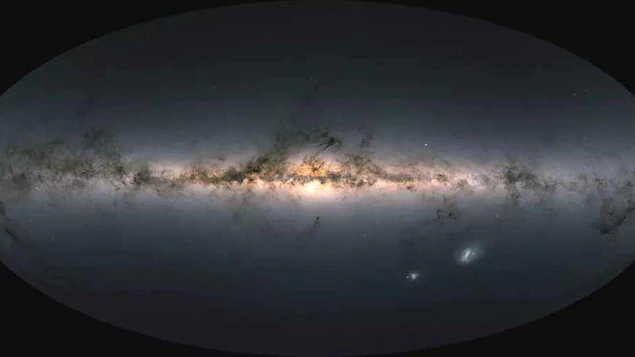
It is the Swiss Army Knife of Astrophysics. There is not a single astronomer who will not use his data directly or indirectly
astronomer at the Observatory of the Côte d’Azur Francois Menard, told AFP, in charge of Gaia in France.
The community of astronomers will be able to draw from Monday on the third catalog of data collected by the instrument, a harvest, accompanied by about fifty science articles, which lists an array of celestial bodies.
Functional telescope since 2013
From the closest, with over 150,000 asteroids in our solar system, whose orbital instrument was calculated with incomparable accuracy
He’s making new measurements of more than 1.8 billion stars in the Milky Way, Maynard says. And outside this galaxy, groups of other galaxies and distant quasars.
Launched on behalf of the European Space Agency (ESA), Gaia has been in operation since 2013, and is stationed in a privileged location, called L2, one and a half million kilometers from Earth, opposite the Sun.
” Gaia is scanning the sky and capturing everything she sees. »
It detects and observes a very small fraction (barely 1%) of the stars in our galaxy, which are 100,000 light-years across.
But it draws more than a simple map. Its two telescopes are linked to a billion-pixel photographic sensor, with commercial cameras numbering in the millions.
Three astronomy, photometric and spectroscopic instruments will interpret, and subsequently retrieve, real photons and light signals.
” Thanks to this, it provides global monitoring of the positions of what is moving in the sky. this is the first time. Before Gaia, we had a very limited view of the galaxy. »
before Gaia? It was Hipparcos, the satellite that revolutionized observation after its launch by the European Space Agency in 1997 by cataloging more than 110,000 celestial bodies.
With Gaia, astronomers can access not only the positions and movements of a large number of stars but also measurements of their physical and chemical characters, and most importantly, their age.
A lot of information Which tells us about their evolution in the past and thus about the evolution of the galaxy
explains astronomer Paula Di Matteo, Misha Haywood Fellow at the Observatoire de Paris-PSL.
It is also One of the reasons for building Gaia
continues the astronomer.
” Stars have a peculiarity that has existed for billions of years. So their measurement is similar to that of a fossil that tells us about the state of the galaxy at the time of its formation. »
This overview of the motions of the Milky Way’s stars has already led to major discoveries.
With the second catalog, delivered in 2018, astronomers were able to show that our galaxy was integrated
Another ten billion years ago.
The catalog has spawned thousands of scientific articles since its first release in 2016. The data stream requires a specialized ground processing chain, DPAC, which calls supercomputers for six European computing centers, mobilizing 450 specialists, explains François Menard, who was in charge.
Without this healing kit, there would be no task
because Gaia produces 700 million star sites, 150 million photometers and 14 million spectra every day.
A torrent of raw data only algorithms led by humans
Convert them into measurements that can be used by astronomers.
It will take five years to deliver this third catalog of observations from 2014 to 2017. And it will be necessary to wait until 2030 for the final version, when Gaia will finish scanning the space, in 2025.